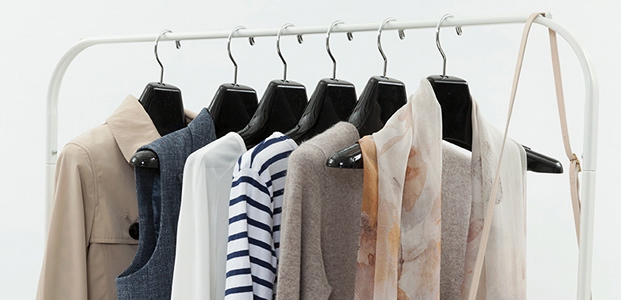Your Style Guide to a Wedding Weekend
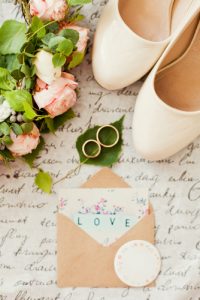 June has arrived and with it, the busy wedding season! Many weddings today are weekend-long celebrations with multiple events leading up to and after the nuptials. This requires thoughtful wardrobe planning for guests. And if you are traveling to the wedding, you’ll also need to consider how to pack your choices.
June has arrived and with it, the busy wedding season! Many weddings today are weekend-long celebrations with multiple events leading up to and after the nuptials. This requires thoughtful wardrobe planning for guests. And if you are traveling to the wedding, you’ll also need to consider how to pack your choices.
I recently wrote an editorial on wedding guest attire for the online fashion boutique Halsbrook, featuring dress code tips and chic fashions to guide their customers in making selections for each event. In this post, I take a closer look at the rules of etiquette; and for those who have to travel to the wedding, provide suggestions on choosing wardrobe pieces to make packing easier.
First, some general guidelines:
● Don’t upstage the bride! Avoid white or shades close to white for any event; they are reserved for the bride. I also recommend avoiding red – it can steal the spotlight, another no-no since it’s the bride’s day!
● Dressing for a summer wedding means looking your best while keeping cool. Focus on wearing light, airy and breathable fabrics – like rayon, cotton, linen or silk, so you don’t get overheated during an outdoor event. Knits usually travel better than woven fabrics and can be ideal for the more casual events. Stretch woven fabrics with spandex behave more like a knit. A woven crepe or piqué might meet the crush test for travel, but all woven fabrics will wrinkle less when carefully folded. For tips on packing pressed clothes and more formal attire, watch my packing video before your trip.
● Consider separates for some of the events so one or two pieces can be worn more than once – this will help keep your luggage lighter. For example, a dress pant could be worn with a dressy blouse for a “Welcome Cocktail Party” and with another top or jacket and different accessories for a luncheon.
When planning your full weekend wardrobe, start with the main event – it sets the theme for the activities leading up to and following the ceremony:
The Wedding & Reception
Your attire should reflect the mood of the wedding and the time of day. The invitation will often note dress code but if not, the style of the invitation and the time of the wedding is the best guide to its formality: An invitation that feels casual suggests casual attire. If the invitation is more formal (heavy cardstock, engraving, tissue paper inside, calligraphy on the envelope) you should wear more formal attire. Generally speaking, the later the wedding and reception, the dressier you should be.
Consider these color and style guidelines, plus protocols, when choosing what to wear:
● For an evening wedding choose darker colors; lighter hues are preferable for a daytime wedding.
● Black should not be worn unless the ceremony is after 5 pm. If the wedding is earlier, remember to choose a color that won’t outshine the bride.
● If the wedding is in a church or synagogue, dress respectively, covering bare arms and neckline with a wrap or jacket.
● A tea length dress is a safe choice for most weddings – it can go from black tie to the beach!
● A country atmosphere calls for something in a similar feel, such as a floral dress.
● A city wedding usually calls for more sophisticated attire: a dress with a jacket for the day; a long or short formal dress for the evening. If dresses are not your style, a dressy suit is very appropriate.
● And what about the often-used code of “Black Tie Optional”? A short festive dress (one with a bit of shimmer in the fabric or with sequins or jeweled details) is appropriate unless you know others are going to wear long.
After you’ve decided on your attire for the wedding and reception, you can plan for the other events:
Welcome Party
Depending upon the venue (is it on a hotel patio or at the bride’s parents’ home?) and your personal style, your choice could be dressy pants or a soft skirt with a silky top, or a dress in a colorful print.
The Rehearsal Dinner
Consider the venue and the wedding theme when deciding what to wear, then choose attire slightly less formal than what you are wearing to the wedding. A cocktail dress worn with pumps is often the perfect choice. A dress pant with a dressy blouse and heels is also appropriate.
Wedding Day Lunch
Lunches and brunches are less formal and your choice of dress depends on the venue. A dressy pant with a long silky top, or a dress with heels and simple jewelry, is a perfect choice for a restaurant or country club. If the setting is more casual, such as an outside barbecue, jeans and a knit top or blouse with flats are appropriate.
Farewell Brunch
Brunch the day after the wedding is typically the most casual event since many people must be ready to travel home. You can’t go wrong with a knit tee-shirt dress or capri pants worn with a knit tee and jacket or sweater. Either will be comfortable to travel in and you are dressed stylishly to honor your host and hostess.
Note: If you are unsure about the dress code, it’s perfectly okay to ask the bride or her family what style of dress they prefer; or to reach to a member of the wedding party that you know.
If you still need help planning what to wear, or how to pack for your weekend trip, don’t hesitate to give me a call or send me an email for a complimentary 30-minute consultation on how to be the “best dressed guest”!
Streamline Your Routine With “Closet Capsules”
My wardrobe strategy for smart travel packing – pack a few versatile pieces planned around coordinating colors – is one that can help you streamline your dressing every day. It’s called a “capsule wardrobe.” I use this concept when planning what to pack for every trip I take. Taking a small mix-and-match wardrobe means fewer pieces, lighter luggage. When you pack the right pieces, less is more!
 What does it mean in your closet at home?
What does it mean in your closet at home?
How many times do you go to your closet and feel like you have nothing to wear – in spite of the number of items hanging there? If you create “closet capsules” within your wardrobe, you’ll be able to put together several polished outfits that you can pick at a moment’s notice. When your closet door opens up to a well-planned wardrobe of coordinated pieces, you spend less time thinking about what to wear.
First . . . what is a “capsule” wardrobe?
Simply stated, it’s a small wardrobe made up of pieces that mix and match that you love to wear. Some would preach that instead of stuffing your closet with items you barely wear, take the Marie Kondo “Tidying Up” approach and strip down to a few key staples you love.
I suggest you think more strategically: Minimize your wardrobe into a collection of pieces that not only mix and match but also streamline your dressing routine, especially for work or travel. It means you’ll no longer stand in front of your closet, wondering what on earth to wear!
The concept goes back to the 1970’s and was initially referred to a collection of essential clothing items that don’t go out of fashion – classics – that can be built upon each season with new pieces.
Today’s capsule concept refers to building groups of 5-12 related pieces that can be worn in several different combinations. Building a working wardrobe for your lifestyle is easiest when you think and build in terms of “closet capsules” by lifestyle need: work, evening, travel, etc.
5 Benefits of Having “Closet Capsules”
- Reduces decision fatigue – busy women have to make decisions every day; the removal of one – choosing your clothes in the morning – leaves you with more mental space and better productivity throughout the day.
- Reduces stress – fewer decisions means one less source of anxiety during the day.
- Saves time – getting ready in the morning becomes easier, quicker and more efficient.
- Saves money – In 1930 the average American woman owned nine outfits. Today, it’s 30 – one for every day of the month. Having closet capsules removes much of the expense from trial-and-error clothing purchases.
- Reduces clutter – How many times have you purchased new clothes but ended up wearing your old favorites anyway? Those favorites might just be the foundation of a closet “capsule”.
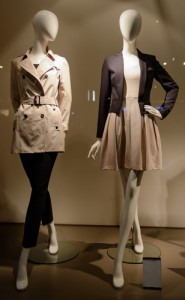 “Closet Capsule” Guidelines
“Closet Capsule” Guidelines
There is no one formula for a capsule, but here are some guidelines:
● Solids are easier to mix than patterns; but a few print pieces can be the links between diverse solids.
● Simple styles are the most versatile, and classic lines will span several seasons.
● Each piece should work with three others to gain you the most mileage. (Note: For my travel capsules, my goal is every top go with every bottom to give me the maximum outfit options.)
It should go without saying that every item should be in your most flattering colors and styles. Versatility is worthless if all those combinations don’t flatter YOU!
How to Get Started
Ideally you start with the items already in your closet, and after a closet “clean out”. Look at your basic and/or favorite pieces in your best colors and most flattering styles, for example:
● Your favorite interchangeable go-to items that form the backbone of your outfits – such as a pair of skinny jeans, classic pants, blazer, pencil skirt, cardigan, silk blouse, ballet flat and trench coat – could form a capsule that can span work and casual time.
● You might have a favorite pair of black trousers, and a teal suit. You could wear the teal jacket with the pants and now you have two looks with one jacket. Other solid colors that would work with teal, such as white, could also go with the black. And that teal/black/white print blouse goes with all pieces. This is the start of a capsule.
● For dressy occasions, a selection of separates – such as an evening pant or skirt, a camisole, a silky blouse and a jacket – can become a capsule to meet various needs through several seasons.
● Accessories are the glue that holds your wardrobe together, linking separate items into new ensembles. Use them to update wardrobe classics or change an outfit instantly from a day to evening look.
Spring is around the corner. You’ll be switching the clothes in your closet and doing a closet clean out – won’t you? This is the perfect time to streamline your dressing routine and consider creating closet capsules.
Do you get stressed choosing what to wear each day? Do you need help in creating capsules in your closet? Send me an email or give me a call. We can assess your wardrobe together and determine the best foundations for capsules that suit your style and streamline your routine. The first 30 minutes is complimentary!
Take the Panic Out of Packing
 Do you struggle with a large suitcase on a trip but only wear half of what you’ve packed? Or are you at the other extreme, throwing things into a suitcase just a few hours before leaving for the airport and praying you’ll have the right things to wear? Both scenarios can be maddening!
Do you struggle with a large suitcase on a trip but only wear half of what you’ve packed? Or are you at the other extreme, throwing things into a suitcase just a few hours before leaving for the airport and praying you’ll have the right things to wear? Both scenarios can be maddening!
Panic-free packing is a result of careful planning. It’s time well spent so you can relax and travel with confidence and ease.
Planning Ahead is Key
My husband and I are traveling south this week – way south to Buenos Aires and the Argentinian wine country. For him, it’s to revisit the sites of his early-career business travel and taste the wines of the Uco Valley. For me, it’s finally seeing “Paris of the South”…and tasting the wines of the Uco Valley!
Planning my wardrobe for this trip was a little challenging because Argentina’s seasons are reversed from ours in the U.S. Planning well ahead of our departure date was critical since I had need of a few new city-chic yet hot-weather-comfortable pieces.
End-of-summer sales reaped a few nice basics but online research and shopping resulted in bigger wins. The weather will be in the 80’s & 90’s, with high humidity. Light cotton gauze is a good easy-care, easy-to-wear fabric for the casual tropics, but it’s not city-chic. I focused instead on lightweight, breathable, and travel-friendly rayon knits and added separates from J. Jill’s Wherever Collection to my travel wardrobe.
Easy Packing is a Process
1. A week to 10 days before a trip I set up a collapsible clothes rack in our guest room. I hang up every clothing item I’m considering taking. This rack makes coordination of separates easier (four tops can hang by one pair of pants); shoes go on the floor below matching up with the selected clothes.
Note: When I lived in a New York City apartment, I didn’t have a spare bedroom so I hung a clothing rack over our bedroom door. You might use a section of your closet. The key is to see everything before you edit and start packing.
2. I chart out each day of my trip on a blank calendar page, noting where I’ll be and expected activity, day and night. Glancing at the rack of clothing, I plan what I could wear each day, and make a note on my calendar. This exercise helps me edit my wardrobe.
Note: The calendar also provides me with a daily wardrobe guide when I unpack at my destination. I don’t need to think about what to wear – I look at my notes and I’m dressed and out the door.
3. I try everything on, creating outfits and adding accessories that will be the most versatile with all clothing.
Note: My mantra is to “pack smart, pack light”:
• Each top should go with each bottom. Take more tops than bottoms.
• Neutral colors are the most versatile. Black/white/beige are my favorites for warm weather travel (city-chic and also country smart).
• Plan to wear each item several times during the trip (accessories are another key to versatility and they can take wardrobe basics from day to evening).
• Double-duty items are golden – a tunic-length blouse that can also be worn as a jacket over a camisole.
• Limit shoes to 3 pairs and be sure to include a comfortable, supportive pair for daytime walking.
4. I check out all of my toiletries and cosmetics to be sure they are replenished and ready to pack. I collect samples of my favorite skin care products and save them for trips; others are transferred to travel-size, leak-proof containers…and I follow the 3-1-1 rule whether I’m checking them or not. It keeps my luggage light.
Note: Most hotels have shampoo, conditioner and body lotions, so you might only need to bring the toiletries that you cannot live without.
5. I prep a little each day or night before I leave to spread the chore out. For those of you who tend to over-pack: Look at your rack of travel clothing frequently and use this time to edit, following the tips in #3 above.
Note: Ignore the urge to keep in any “but what if…” items. Smart travelers plan what to pack based on the weather and activities, packing only for what is known and logical possibilities. (There’s nothing wrong with shopping for a suddenly needed item when you get there – that’s part of the fun of travel!)
6. I do my final packing the day before departure. Before you shut your suitcase, however, check the weather forecast again for your destination. Forecasts change daily and if you didn’t think you’d need that extra sweater yesterday, now you might!
I’m ready, relaxed and off to Argentina! Follow me on Facebook, where I’ll share street scenes of Buenos Aires, shopping highlights, and the beauty of the vineyards in the Mendoza wine country!
Click here for more tips on travel wardrobes and watch this video to see how I packed my suitcase.
I’ll be sharing specifics on my trip and travel wardrobe in the next edition of Susan Foster’s and my Smart Packing “Tips for Travelers” e-newsletter. I invite you to subscribe!
How to Be a Smart Shopper
Fall is in the air and I’m pouring through my favorite fashion magazines, store catalogs, and runway shows on YouTube, dreaming of all the new wardrobe pieces I’d love to have. I can’t have them all – my budget simply won’t allow it – nor do I have the lifestyle many fashions are designed for. Before you and I head to the stores, it’s smart to identify what we need – not just what we want – and to be savvy shoppers. The payoff will be a better investment of both our money and our time.
BEFORE YOU SHOP:
1. Inventory your fall/winter wardrobe to get a big picture of what you already have. There’s nothing worse than getting a new item home and realizing you already have something very similar…or that it doesn’t go with anything else in your closet. (How many orphans does your closet already hold?)
2. Determine what you need. Do some favorite basics need to be replaced due to wear? Does this season’s wardrobe need a little updating? Do you need to bring more of your best colors into your closet? Make a list of “needs” and also “would like to haves” – I find it helpful to make the distinction when shopping within a tight budget.
3. Shop your closet first. Can you restyle items you already have to create a new look? For example, belt a dress and wear it with leggings and booties. Will the addition of an “impact” piece – a new scarf, a belt, or shoe – give last year’s major suit purchase a fresh look? Did you keep that poncho you purchased way back when? Well…it’s “trending” again!
NOTE: Here’s where a wardrobe consultant can save you lots of money! A trained eye can see new wardrobe combinations that you hadn’t thought of and give you guidance on what 2 or 3 items will update your wardrobe or compete the best look for you.
TIME IS PRECIOUS, USE IT WISELY:
- Set a realistic budget. It may be a ballpark number but many women overspend because they don’t set parameters. You don’t want buyer’s remorse when you look at your receipts – make sure you don’t spend more than you can afford.
- Shop online first. Unless it’s a brand I’ve worn before, I prefer shopping in a store so that I can touch the fabric, examine the construction, and ensure a good fit. However, I research online first to find out which store has what I’m looking for…and I always go to a few websites for help with my planning. (I love Pinterest for getting a wide assortment of styling ideas; I’m a classic dresser and Halsbrook is a favorite online retailer for seeing beautiful new wardrobe basics.)
- Shop when stores are least crowded, usually weekday mornings before noon, at dinnertime, and in bad weather. Shopping when stores are the busiest can lead to shopping fatigue, which might make you irritable – not good for making buying decisions. You want to be alert and positive.
- Shop alone unless you are working with a professional wardrobe consultant. It’s easy to get talked into things that are not on your list or in your budget. And friends are often uncomfortable honestly critiquing how something looks on you.
- If you’ve had “your colors done,” always shop with your color card. You’ll be amazed how much this speeds up your shopping – you can quickly skim over the aisles. And remember to bring any item you need to match as color is key and a picture on your smartphone may not be accurate.
BE SMART WITH HOW YOU SPEND YOUR MONEY:
- Consider the mileage and utility you’ll get. If you’re on a tight budget, every purchase counts. Can it be worn with 2 or 3 items you already own or can you wear it multiple ways? Can it be worn for multiple occasions or through multiple seasons?
- Make sure the garment fits properly and is comfortable. Try it on, sit down in it, raise your arms overhead, cross your arms in front of you, bend over and touch your toes. Does the garment move with you or restrict your movement?
- Check garments for maintenance requirements. Dry cleaning adds cost. Hand washing takes time. And how much do you really love to iron? Squeeze fabrics in your hand for 10 seconds to see how likely they are to wrinkle. If the fabric bounces back with few or no wrinkles, you probably won’t have to spend time ironing it.
- Don’t buy an item just because it’s on sale. Most retailers are offering early-season discounts right now on regular priced items. A bargain is not a bargain if it isn’t you, doesn’t fit correctly, is not your best color, or doesn’t fill a legitimate gap in your wardrobe. Only buy an item on sale when it’s something that is on your list.
Do you still get stressed when choosing what to wear for work, leisure, or travel? I can help you maximize your time and your budget…and feel confident choosing what to wear to make the best impression on any occasion. Contact me today for a style session. Our first 30 minutes together – virtually or in person – is complimentary.
How to Choose Smart Travel Fabrics
Do you want to travel comfortably and wrinkle-free? Then choose your fabrics wisely. With the right fabrics you can roll up a blouse, pant or dress, tuck it into the corner of a suitcase, and expect it to look presentable upon arrival!
comfortably and wrinkle-free? Then choose your fabrics wisely. With the right fabrics you can roll up a blouse, pant or dress, tuck it into the corner of a suitcase, and expect it to look presentable upon arrival!
A little fiber and fabric savvy will help you select the best clothes for your travel destination to keep you warm or cool, plus wrinkle-free.
For example, I own two pair of black summer pants. One is 100% cotton and looks lived in at the end of the day. The other is 94% cotton/6% spandex, which I prefer for travel – the spandex adds “comfort stretch” and wrinkle recovery so I can wear the pant several times during a trip without it looking worn out.
CAREFREE TRAVEL FABRICS
You can’t beat knits for comfort and packability – they can be rolled successfully and wrinkle less than most woven fabrics. Stretch wovens with spandex behave more like a knit than a woven.
Soft fabrics usually wrinkle less than crisp ones. Washable, drip-dry synthetics are easy-care. Many of the new synthetic fibers “wick” moisture away from your body so they are cool and comfortable even for adventure travel. Fabrics with intentional wrinkles, such as crinkled rayon crepe or cotton gauze, ensure wrinkle-free packing.
Will 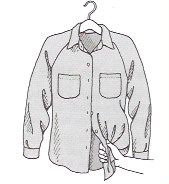 the Fabric Perform?
the Fabric Perform?
Here are some easy tests from Smart Packing for Today’s Traveler by Susan Foster to help you decide if the fabric is travel worthy:
- Will it wrinkle? – Grab a corner of the fabric and crush it in your hand. Hold it for 30 seconds, letting your hand warmth and moisture penetrate the fabric…then let go. If the fabric doesn’t wrinkle, it’s a good choice. If it does wrinkle but the wrinkles shake out after a minute or two, it’s also a good choice.
 Will it retain its shape? – There’s nothing more annoying than baggy knees or a sagging back in a pant. Check for shape retention by stretching the fabric between your thumbs and forefingers, holding it for 10 seconds. If the yarns slip apart easily, normal wear could cause stress on the seams. If there’s no yarn shifting and the fabric springs back after stretching, it will hold its shape when worn. Generally, wove
Will it retain its shape? – There’s nothing more annoying than baggy knees or a sagging back in a pant. Check for shape retention by stretching the fabric between your thumbs and forefingers, holding it for 10 seconds. If the yarns slip apart easily, normal wear could cause stress on the seams. If there’s no yarn shifting and the fabric springs back after stretching, it will hold its shape when worn. Generally, wove n fabrics hold their shape better than knits; synthetic fibers better than natural ones.
n fabrics hold their shape better than knits; synthetic fibers better than natural ones.- Will it breathe? Hold the fabric to your mouth and blow through it. If no air passes through, the fabric doesn’t breathe and might feel like a plastic bag on your body.
Smart Packing Tip: Sometimes it seems that no matter how carefully you’ve packed, an item or two has a bothersome wrinkle. A spritz of plain water on washable fabrics can calm packing wrinkles. The trick is to spritz the hanging item lightly (my friend Susan tucks a 2-oz. refillable spray bottle into her luggage for this purpose), then smooth gently and allow it to dry.
FIBER & FABRIC PRIMER
Read on to learn which fibers are the most easy-care, which to choose for warmth, and which will keep you cool. Bookmark this post for future reference when you are planning your next trip.
 Natural Fibers
Natural Fibers
Wool: A great insulating fiber and all-season fabric except in the hottest, most humid climates. Wool retains warm air and keeps moisture out, keeping you warm; it also absorbs moisture from your skin to keep you cool and dry. “Merino” wool is lightweight, warm and packs small. Note: A merino wool sweater is the perfect layering piece in any weather and adventure travelers love the comfort of thin merino wool for under layers.
Cotton: A travel favorite in jeans, t-shirts and turtlenecks; however, these items are more carefree when made of a cotton/polyester or cotton/lycra blend – they’ll resist wrinkling and wash and dry more easily. Wrinkle-resistant finishes applied to cotton also cut down on wrinkling. Note: I love to travel with crisp white no-iron shirts…the negative is they don’t have the breathability I need in humid weather.
Linen: Cool and comfortable even in the hottest, most humid weather. It absorbs perspiration, doesn’t cling to the body, and dries quickly…but it wrinkles! Note: Look for linen blended with other easy-care fibers to create a fabric that wrinkles less.
Silk: Luxurious yet durable and wrinkle-resistant. It’s insulating and warm yet lightweight. (I still pack a silk camisole I’ve had for years to layer under a blouse in cool climates.) Heavier weight, textured silks, silk knits or “washable silk” (pretreated to minimize shrinkage) have superb travel performance and style. Leave the lightweight, dry-clean only silks at home – they’re high maintenance.
Synthetics
Most man-made fibers have great travel properties:
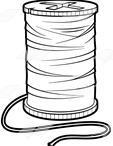 Rayon – Made from wood pulp, it has a soft drape, is highly absorbent and cooler than linen and cotton. Tencel® is a popular brand name for “high-tech” rayon. It might wrinkle when packed but any wrinkles hang out quickly.
Rayon – Made from wood pulp, it has a soft drape, is highly absorbent and cooler than linen and cotton. Tencel® is a popular brand name for “high-tech” rayon. It might wrinkle when packed but any wrinkles hang out quickly.
Nylon – Strong, easy to wash, quick drying, and doesn’t cling to dirt. However, its low moisture absorbency makes it feel clammy in hot weather – not good for trips to hot, humid locales.
Polyester – Also a strong, durable and wrinkle resistant fabric that dries very quickly, it does not absorb moisture…so it can feel clammy in hot weather. But there are two polyester travel favorites:
– Polyester fleece – Soft, warm, breathable and strong, this machine washable and dryable fabric is lighter than wool, giving you warmth without weight. Two names often seen are Polartec® and Polarfleece®.
– CoolMax –Designed to move or “wick” perspiration away from the body, it has the fastest drying rate of any fabric. Found in shirts, pants, undies, socks and sports bras. There are many other trade names for “wicking” fabrics, including Dri-Fit, Dri-Power, Dri-Release. Look at hang tags for the key words “wicking” and “dry”.
Microfibers – Synthetic fibers that are so fine it takes 100 of them to equal one human hair! Made from polyester, nylon, rayon or acrylic, they’re often blended with other fibers. Microfiber fabrics are excellent for travel – they are lightweight, durable, wrinkle resistant, easy-care, water repellent and wind resistant. And they wick and breathe. A favorite of mine are Uniglo’s HEATTECH t-shirts. I pack them by habit now to wear alone or as an under layer for warmth.
Develop your fiber and fabric savvy – a travel wardrobe that is both comfortable and wrinkle-free will make all the difference on your next trip!
If you would like more guidance and a personalized approach to planning your next travel wardrobe, contact me for an in-person or virtual consultation. Our first half-hour together is complimentary!
Does Your Wardrobe Fit Your Lifestyle?
![]()
 How many items in your closet beg to be worn but you have no place to wear them? Are they part of your past? Or, did you buy them with hopes they would be part of your future?
How many items in your closet beg to be worn but you have no place to wear them? Are they part of your past? Or, did you buy them with hopes they would be part of your future?
We’re all dreamers and it’s easy to buy clothes for the lifestyle they promise instead of letting our lifestyle determine the clothes we buy.
Lifestyles change at different stages in our lives – student, professional, working or at-home mom, re-entering the job field, retiring – and lifestyle transition can create a big change in wardrobe needs.
A woman with young children who also works or volunteers could need a more varied wardrobe to take her from morning to evening than a business woman who spends most of her waking hours in an office. And the woman who retires from a long corporate career to adopt a more casual lifestyle of travel, volunteering, and golf might need to shift her wardrobe dramatically.
Chart Your Lifestyle
If you never again want to cry “I don’t have a thing to wear!”, before you go on your next shopping spree, analyze how you really spend your time … then commit to making purchases that work for the activities in your current life. Do this periodically and the result will be productive seasonal closet edits and cost effective shopping excursions.
Here’s how to get a clear picture of your lifestyle and needs:
- Ask yourself: What are the activities I spend my time in, and what is suitable and acceptable dress for those activities in the area where I live?
- Make a list of all activities you engage in during a month (either keep a diary and record this in real time or reflect back) and how often you do them – not how many hours you spend in each but how many days in the month you do it. Note: You might spend 8 hours in an office and only two hours dining out, but they could require two different types of clothing.
- Group the activities into categories that require a similar type of clothing. For example:
— Professional time (full-time, part-time or volunteer work)
— Casual daytime (shopping, lunch with friends, travel)
— Social time (church, entertaining, dining out)
— Private time (lounging, sewing)
— Sports & recreation (golf/tennis, working out) - If you’re a visual person like I am, you might find it helpful to note the time
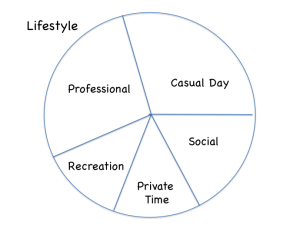 spent in the form of a pie chart, as I’ve done on the left, converting the number of days for each category into a percentage of the whole month – that is, a slice of the pie.
spent in the form of a pie chart, as I’ve done on the left, converting the number of days for each category into a percentage of the whole month – that is, a slice of the pie. - Now you need to know how much of what you own fits the lifestyle you are leading right now. Look into your closet and inventory your wardrobe with your lifestyle chart in mind. Ideally, your mix of clothing corresponds to the distribution of your lifestyle categories.
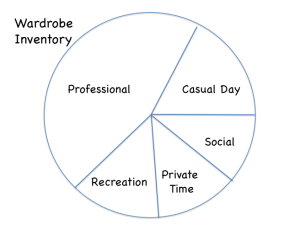 When I made a transition from the corporate world, my wardrobe inventory told me my professional category was seriously over-represented in my closet. I made it a goal to focus on my more casual lifestyle with all new purchases … plus restyle some special pieces to fit my new lifestyle.
When I made a transition from the corporate world, my wardrobe inventory told me my professional category was seriously over-represented in my closet. I made it a goal to focus on my more casual lifestyle with all new purchases … plus restyle some special pieces to fit my new lifestyle.
If your clothing mix doesn’t match your lifestyle, make it your goal to bring them into balance!
Next Steps
Now it’s time to make some decisions. The ideal wardrobe holds items that fit the lifestyle you have now. Anything else is taking up valuable space and not paying its way!
What should you part with? If an item no longer meets your need – or you think it never will – can it be restyled or combined with more lifestyle appropriate items in a brand new way? Here’s where the help of a skilled professional wardrobe consultant can be invaluable!
Begin now to weed out of your closet any items that simply do not support your lifestyle today and cannot be restyled to do so. There are several ways to donate this clothing, as I’ve covered in a previous post.
Where do you need to build a wardrobe that really works for you? Focus your future shopping on the lifestyle categories that are not represented enough in your closet.
A wardrobe that is streamlined to align with your lifestyle makes your life easier and getting dressed more enjoyable!
If you would like more guidance plus a personalized approach to building a wardrobe that works for your lifestyle, contact me today for an in-person or virtual consultation. Our first half-hour together is complimentary!

